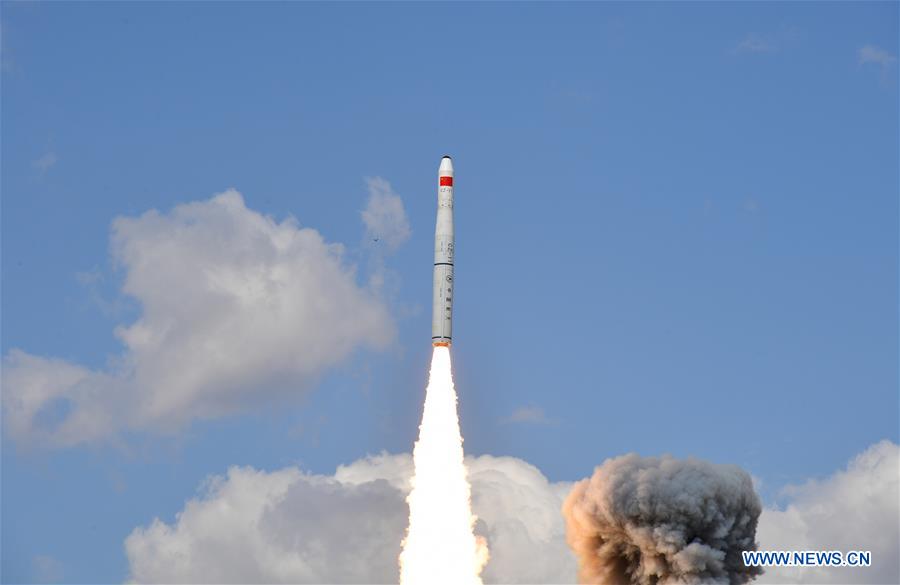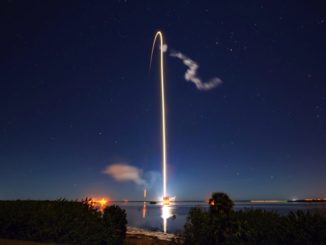
Five commercial Earth-imaging satellites rode a Long March 11 rocket into orbit Thursday from the Jiuquan space base in northwestern China.
The five satellites will join the Zhuhai 1 constellation of remote sensing spacecraft under development by Zhuhai Orbita Aerospace Science and Technology Co. Ltd. based in southern China’s Guangdong province.
The 68-foot-tall (21-meter) Long March 11 rocket lifted off Thursday from the Jiuquan launch center at 0642 GMT (2:42 a.m. EDT; 2:42 p.m. Beijing time), according to the China Academy of Launch Vehicle Technology, the state-owned contractor for the Long March 11 booster.
The solid-fueled launcher fired out of a tube on a mobile transporter at Jiuquan, then ignited its first stage motor in mid-air to begin the climb into orbit.
After heading south from Jiuquan, the four-stage rocket delivered its payloads to a nearly circular orbit around 310 miles (500 kilometers) above Earth, inclined 97.4 degrees to the equator, according to U.S. military satellite tracking data.
CALT declared the launch a success.
Thursday’s launch was the eighth flight of a Long March 11 booster since 2015. All have been successful, including the most recent Long March 11 flight in June, which flew on China’s first orbital launch from a sea-based platform.
The launch was China’s 18th orbital launch attempt so far this year, including two missions that failed to reach orbit.
Four of the Zhuhai 1 satellites launched Thursday host hyperspectral imaging sensors sensitive to light in 256 spectral bands. The improved spectral sensitivity allows the satellites to collect richer information about surface features, vegetation, and ocean conditions than a typical optical instrument.
The other spacecraft launched into the Zhuhai 1 constellation Thursday carries a video imager with a resolution of about 3 feet, or 90 centimeters, according to the state-run Xinhua news agency.
Including the satellites deployed in space Thursday, Orbita has launched 12 Earth-imaging microsatellites since 2017. The company’s Zhuhai 1 constellation will eventually number 34 spacecraft, including video, hyperspectral, high-resolution optical, radar and infrared imaging satellites, Xinhua said.
The Long March 11 is sized to loft small satellites into low Earth orbit. It measures nearly 7 feet (2 meters) in diameter and can haul up to 770 pounds (350 kilograms) of payload to a 435-mile-high (700-kilometer) sun-synchronous orbit.
In a statement after Thursday’s launch, CALT said it is developing an upgraded version of the rocket called the Long March 11A with a larger first stage booster to haul heavier cargo into orbit. CALT said engineers are also working on a larger payload shroud for the Long March 11 to provide additional volume for satellites.
Email the author.
Follow Stephen Clark on Twitter: @StephenClark1.



